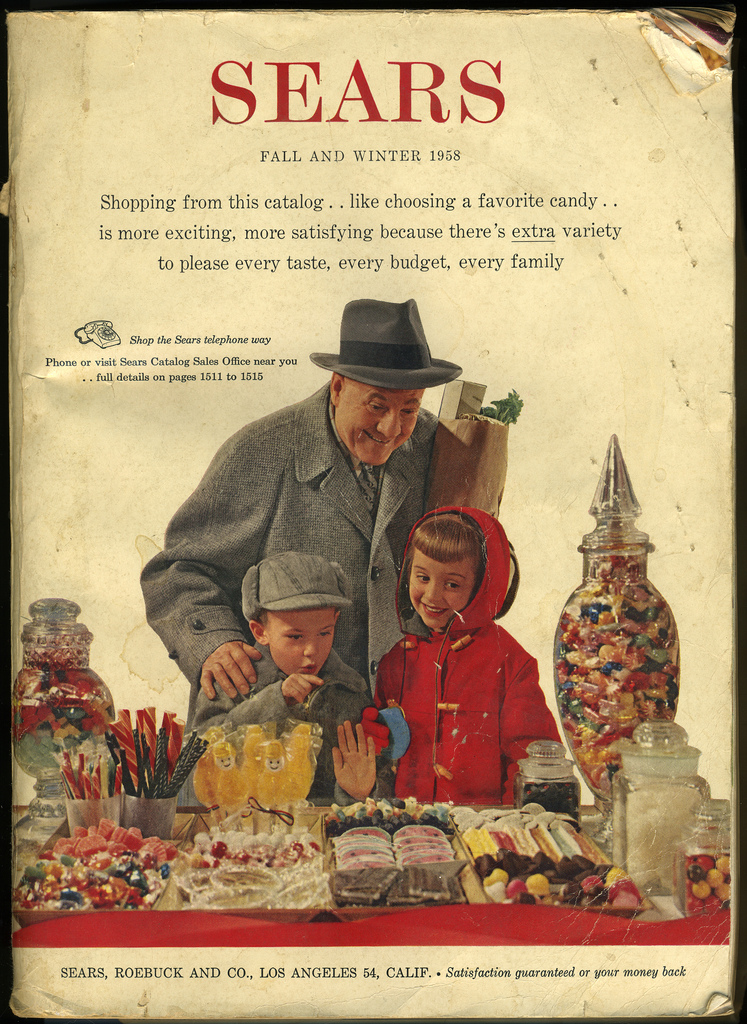Sears—A Chicago Icon And Onetime Tech Giant—To Shut Its Oldest Store
By Dan Weissmann

Sears—A Chicago Icon And Onetime Tech Giant—To Shut Its Oldest Store
By Dan WeissmannThe oldest brick-and-mortar Sears location—on Lawrence Avenue, on Chicago’s north side—starts a going-out-of-business sale on May 20.
The company has been on deathwatch for years, but when this store opened, Sears was the dominant retailer of its time.
These days, what’s remarkable about the Sears on Lawrence is how quiet it is.

Two blocks west, in front of Sears, there’s almost nobody.
Yesenia Herrera is one of the few people shopping at Sears, though she’s not actually shopping. She’s just here with her mom—and she just heard the store is closing.
“It sucks,” she says. “This is like the only clothing store there is around here—like, walking distance, you know?”
Asked about the clothing itself, she offers a blunt assessment. “It’s not the best,” she says, “but it’s not really cheap either. So…”
Close to home, it would seem, is the only selling point.

“I guess that it sucks,” she says of the store’s closing, “but I can see why they’d be closing it down.”
Inside, there’s not even that much stock, and there’s a weird sense of spaciousness— expanses of worn carpet.
Instead of having to thread a narrow path between racks of clothing, a customer can reach in any direction and not touch any merchandise at all.
In the luggage section, it’s possible to walk several paces without coming in reach of anything to buy.
If this store wasn’t closing down now, it would be soon.

The company has been losing money for years, with sales falling steadily.
“It’s hard to envision a scenario where Sears can stay a going concern over the next five years,” says John Kernan, an analyst with the investment bank Cowen and Company.
Kernan doesn’t normally follow Sears, but he’s been looking into what’ll happen when the company goes belly-up.
“It’s going to be a big jump-ball for market share, for other, healthier retailers,” he says.
Not that he thinks big-box retail in general is a great bet in the coming years.
“There’s certainly going to be a lot less stores,” he says. “I mean, Amazon will be the biggest apparel retailer within a couple of years.”
Once upon a time—for instance, a hundred years ago, before the store on Lawrence even opened—Sears was Amazon.

“They were really leveraging the fact that transportation for goods was getting much cheaper and easier,” says Sara Ellison, a senior lecturer on e-commerce at MIT.
A key decision in taking advantage of those changes was choosing the company headquarters.
It located in Chicago, which was a transportation hub.
The big east-west rail connections were all right here.

Once those were built, people could hop on I-94 and drive to the mall.
“Sears responded by putting a lot more emphasis on their brick and mortar stores,” Ellison says, “and less emphasis, over the course of the 20th Century, on their mail order.”
Sears sent out its last big catalog in 1993—one year before Jeff Bezos started Amazon.
If Sears is a company that rose and fell with technology, then back in the store on Lawrence, the technology section—consumer electronics—is the most-powerful symbol of the company’s decline.
This really is your father’s department store. Maybe even your grandfather’s.

For instance, there are fifteen different configurations of landline handsets on offer. Also, a two-pack of blank VHS tapes is available. As is a four-pack of blank CD-ROMs.

That’s what Mike Meredith came looking for—some wrenches for what he calls “a plumbing situation” at his home nearby.
He says the quality of the tools themselves are less of a draw than the fact that the company has always stood behind them.
“They had a policy,” he says. “You just return it whenever it breaks: lifetime warranty, no questions asked.”
However, that lifetime warranty may be hard to take advantage of, if Sears goes out of business.
This store, on Lawrence, the oldest one of all, will close in August.
Dan Weissmann is a staff reporter for WBEZ. Follow him @danweissmann.

